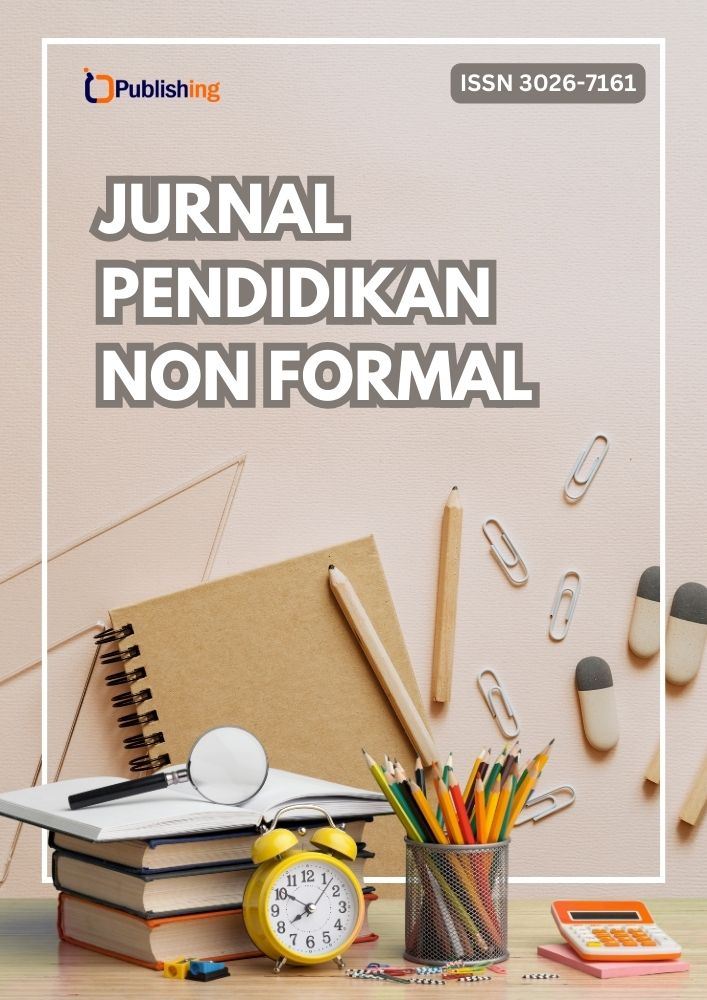Analisis Kepuasan Guru di SMP Negeri 1 Waru Terhadap Pengaruh Sarana dan Prasarana yang Diberikan oleh Pemerintah
DOI:
https://doi.org/10.47134/jpn.v2i2.1220Keywords:
Sarana dan Prasarana, Kinerja Guru, Uji Validitas, Uji Reliabilitas, Analisis Deskriptif, Pendidikan, Fasilitas SekolahAbstract
Penelitian ini bertujuan untuk menganalisis pengaruh sarana dan prasarana terhadap kinerja guru dalam kegiatan belajar mengajar di sekolah. Pendekatan kuantitatif dengan metode survei digunakan untuk mengumpulkan datal melalui kuesioner yang disebarkan kepada para guru. Uji validitas menunjukkan bahwa hubungan antara ketersediaan fasilitas baik fasilitas umum maupun teknologi dengan kinerja guru tidak signifikan. Selain itu, uji reliabilitas menghasilkan nilai Cronbach's Alpha sebesar 0,469, yang menunjukkan konsistensi jawaban yang rendah. Meskipun mayoritas responden menilai positif ketersediaan fasilitas sekolah, masih terdapat kekurangan dalam aspek aksesibilitas teknologi dan transparansi pengadaan fasilitas. Temuan ini menunjukkan bahwa upaya peningkatan kualitas sarana dan prasarana perlu diiringi dengan pelatihan dan dukungan yang lebih baik bagi para guru. Penelitian ini memberikan rekomendasi kepadal sekolah dan pemerintah untuk meningkatkan efektivitas penyediaan fasilitas guna mendukung kinerja guru dan kualitas pendidikan.
References
Alkhawaldeh, A. (2017). School-based Teacher Training in Jordan: Towards On- school Sustainable Professional Development. Journal of Teacher Education for Sustainability, 19(2). https://doi.org/10.1515/jtes-2017-0014 DOI: https://doi.org/10.1515/jtes-2017-0014
Al-Rahmi, A. M., Alias, N., Othman, M. S., Alzahrani, A. I., & Alfarraj, O. (2022). Acceptance of mobile technologies and M-learning by university students: An empirical investigation in higher education. Education and Information Technologies, 27(6), 7805-7826. https://doi.org/10.1007/s10639-022-10834-9 DOI: https://doi.org/10.1007/s10639-022-10934-8
Balliet, D., Tybur, J. M., & van Lange, P. A. M. (2017). Functional Interdependencel Theory: An Evolutionary Account of Social Situations. Personality and Social Psychology Review, 21(4)361-388. https://doi.org/10.1177/1088868316657965 DOI: https://doi.org/10.1177/1088868316657965
Chung Sea Law, D. (2010). Quality assurancel in post-secondary education: the student experience. Quality Assurance in Education, 18(4). https://doi.org/10.1108/09684881011079125 DOI: https://doi.org/10.1108/09684881011079125
Dinc, E.l (2019). Prospective teachers’ perceptions of barriers to technology integration in education. Contemporary Educational Technology, 10(4). https://doi.org/10.30935/cet.634187 DOI: https://doi.org/10.30935/cet.634187
Earthman, G. I. (2002). School Facility Conditions and Student Academic Achievement.
UCLA’s Institute for Democracy, Education, & Access University, 2002(October).
Farhan, W., Al-Rahmi, A. M., Alias, N., Othman, M. S., Razmak, J., Demers, S., & Laflamme,
Johnson, R. D., Hornik, S., & Salas, E. (2008). An empirical examination of factors contributing to the creation of successful e-learning environments. International Journal of Learning, 14(1), 27-34. https://doi.org/10.1108/1077-073000120843
Li, H., Chen, Y., & Huang, X. (2021). Sustainable development of school facilities and teacher training: A combined approach. Journal of Cleaner Production, 278,l 123961. https://doi.org/10.1016/j.jclepro.2020.123961 DOI: https://doi.org/10.1016/j.jclepro.2020.123961
Pilcher, N. (2024). “Qualitative” and “quantitative” methods and approaches across subject fields: implications for research values, assumptions, and practices. Quality and Quantity, 58(3), 2357–2387. https://doi.org/10.1007/s11135-023-01734-4 DOI: https://doi.org/10.1007/s11135-023-01734-4
S.l (2019). E-learning systems versus instructional communication tools: Developing and testing al new e-learning user interface from the perspectives of teachers and students. Technolog in Society, 59, 101192. https://doi.org/10.1016/j.techsoc.2019.101192 DOI: https://doi.org/10.1016/j.techsoc.2019.101192
Santoro, F. M., Borges, M. R. S., & dos Santos, N. (2000). An infrastructurel to support the development of collaborative project-based learning environments. In Proceedings ofthe Sixth International Workshop on Groupware (CRIWG 2000). IEEE. https://doi.org/10.1109/CRIWG.2000.885145
Seeli, D. J. J. (2024). Quantitative Analysis of Gradient Descent Algorithm using scaling methods for improving the prediction process based on Artificial Neural Network. Multimedia Tools and Applications, 83(6), 15677–15691. https://doi.org/10.1007/s11042-023-16136-9 DOI: https://doi.org/10.1007/s11042-023-16136-9
Smith, J., &l Turner, D. (2018). Improving survey designl in educational research: Addressing reliability issues. International Journal of Social Research Methodology, 21(5) 687-702. https://doi.org/10.1080/13645579.2018.1427604 DOI: https://doi.org/10.1080/13645579.2018.1427604
Tripathi, A., & Kalia, P. (2024). Examining the effects of supportive work environment and organizational learning culture on organisational performance in information technology companies: The mediating role of learning agility and organisational innovation. Innovation: Organization and Management, 26(2).l https://doi.org/10.1080/14479338.2022.2116640 DOI: https://doi.org/10.1080/14479338.2022.2116640
Wedman, J., & Diggs, L. (2001). Identifying barriers to technology-enhanced learning environments in teacher education. Computers in Human Behavior, 17(4), 421-430. https://doi.org/10.1016/S0747-5632(01)00012-7 DOI: https://doi.org/10.1016/S0747-5632(01)00012-7
Yangambi,l M. (2023). Impact of School Infrastructures on Students Learning and Performance: Case of Three Public Schools in a Developing Country. Creative Education, 14(04). https://doi.org/10.4236/ce.2023.144052Zhao, Y., &l Frank, K. A. (2003). Factors affecting technology uses in schools: An ecological perspective. American Educational Research Journal, 40(4), 807-840.l https://doi.org/10.3102/00028312040004807 DOI: https://doi.org/10.4236/ce.2023.144052
Downloads
Published
How to Cite
Issue
Section
License
Copyright (c) 2024 Salma Eka Zeniarda, Ilham Hadi Kusuma, Fatma Afrilia, Rahma Dwi Nur Aini, Nur Ardiana Fariza, Ayu Wulandari

This work is licensed under a Creative Commons Attribution 4.0 International License.










